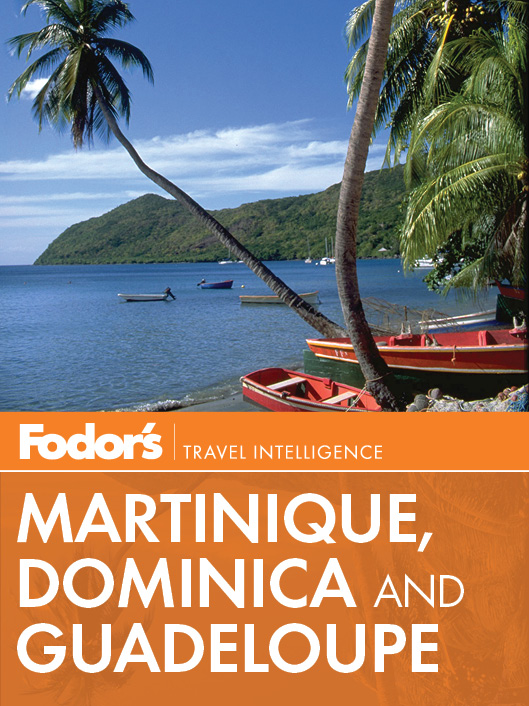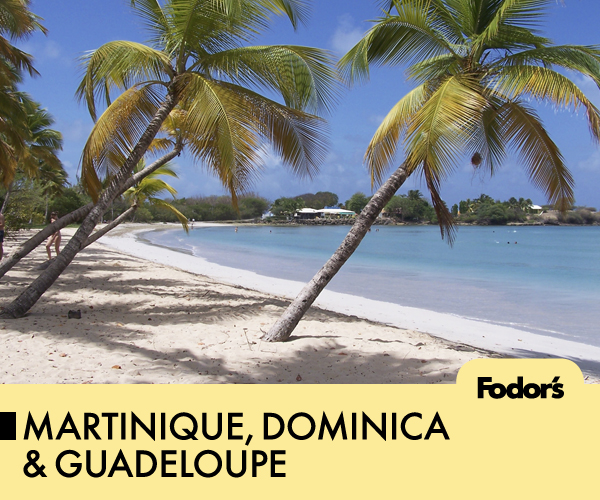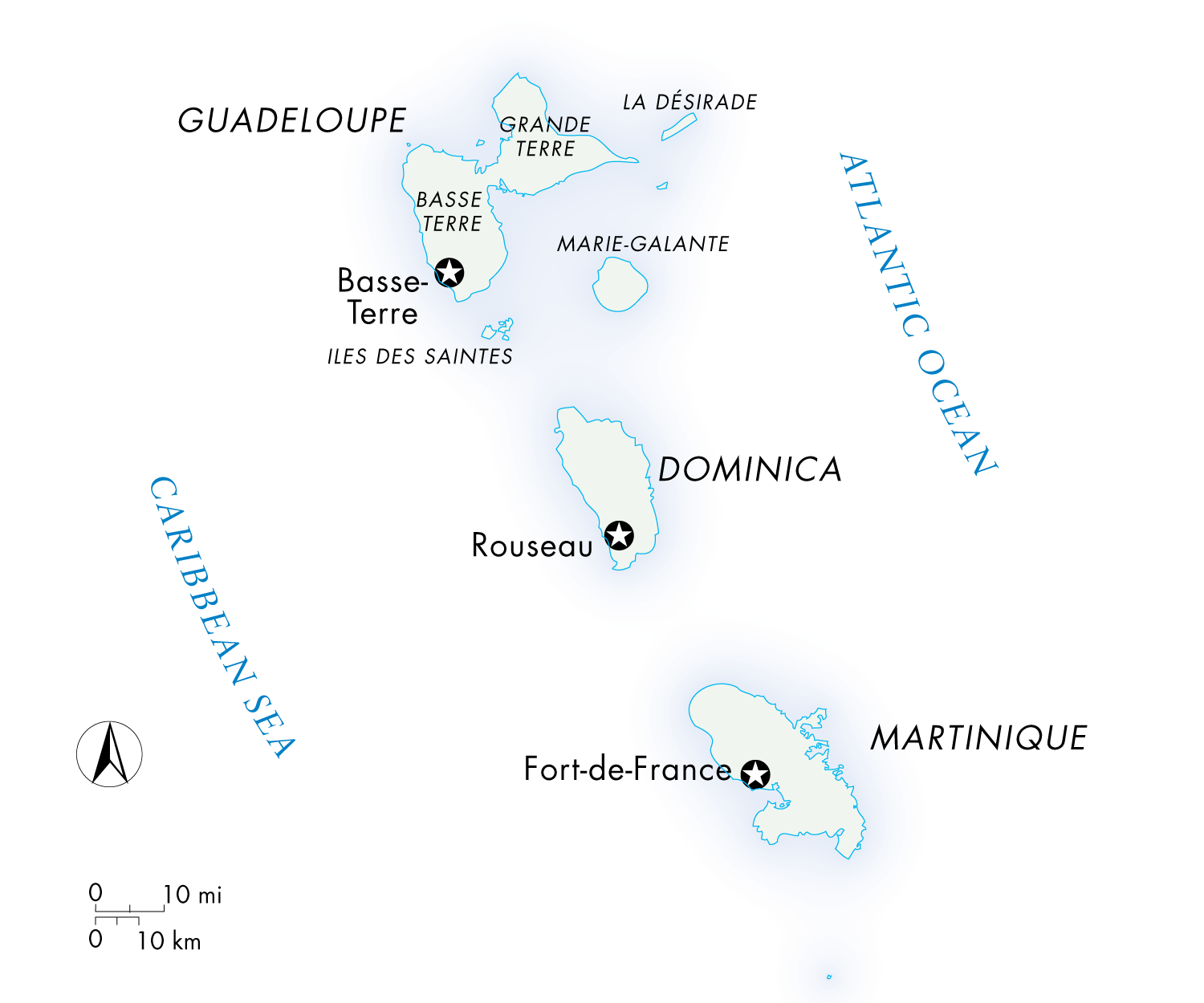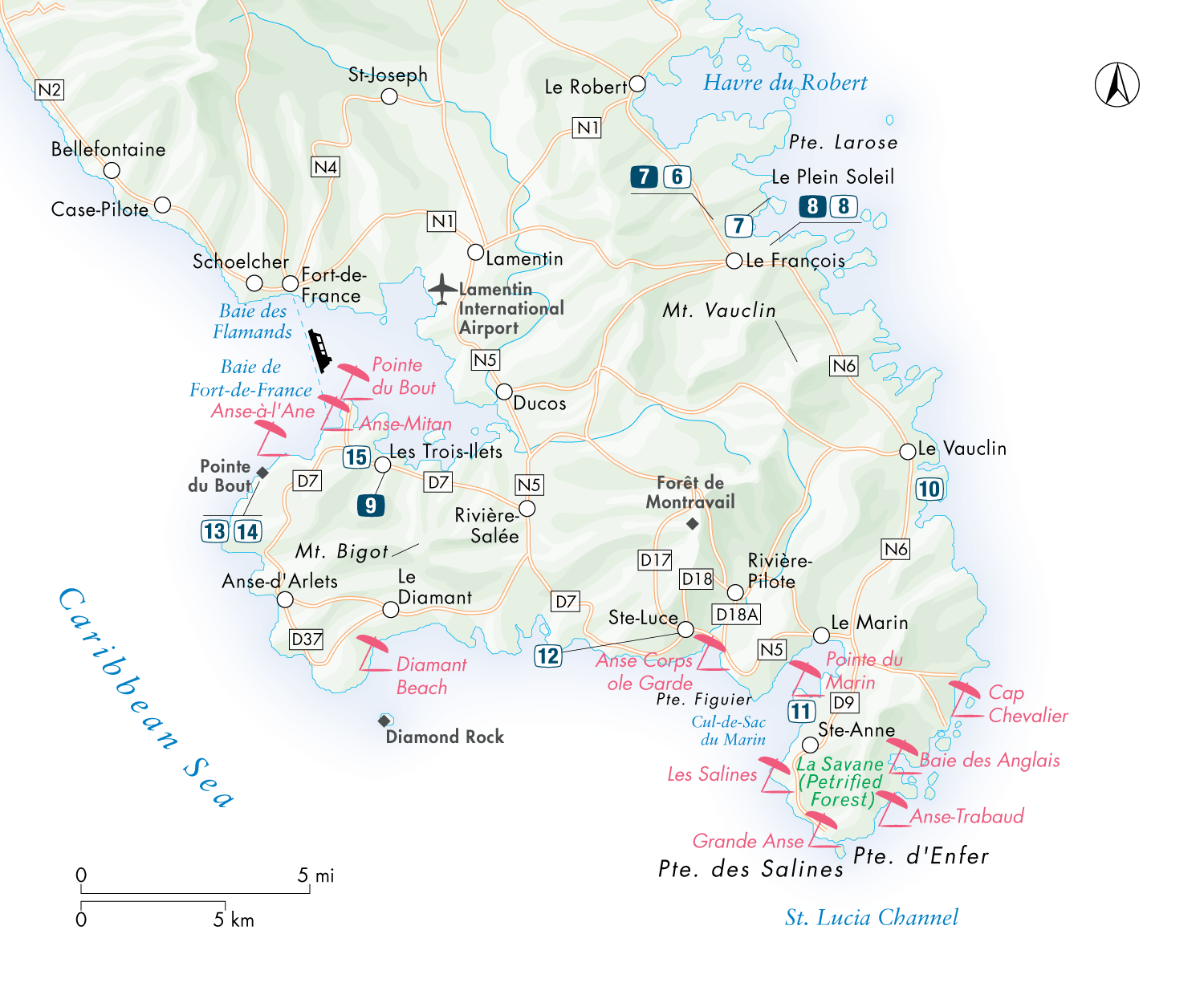WELCOME TO MARTINIQUE
Numerous scattered ruins and other historical monuments reflect the richness of Martiniques sugarcane plantocracy, of rhum and the legacy of slavery. The aristocratic planters are gone, but some things havent changed so much. The islands economy depends on les bananes (bananas), lananas (pineapples), cane sugar, rum, fishing, and even voil tourism, though it is not the lifeblood of the island. Martinicans will be glad you came, but theres no gushing welcome.
Most just go about their business, with thousands employed in government jobs offering more paid holidays than most Americans can imagine. Martinicans enjoy their time off, celebrating everything from le fin de la semaine (the weekend) to Indian feast days, sailboat races, and Carnival.
If you believe in magic, Martinique has it, as well as a sensuality that fosters romance. It has become known as the island of revenants, those who always return. Et pourquoi non?
Christopher Columbus first sighted this gorgeous island in 1502, when it was inhabited by the fierce Carabes, who had terrorized the peace-loving Arawaks. The Arawaks called their home Madinina (the Isle of Flowers), and for good reason. Exotic wild orchids, frangipani, anthurium, jade vines, flamingo flowers, and hundreds of vivid varieties of hibiscus still thrive here.
Though the actual number of French residents does not exceed 15% of the total population, Martinique is still a part of France, an overseas dpartement to be exact, and French is the official language, though the vast majority of the residents also speak Creole. In colonial days, Martinique was the administrative, social, and cultural center of the French Antilles, a rich, aristocratic island famous for its beautiful women. The island even gave birth to an empress, Napolons Josphine. It saw the full flowering of a plantocracy, with servants and soirees, wine cellars and snobbery. Islanders still enjoy a fairly high standard of living, and the per-capita GNP is the highest of any island in the French Antilles.
Martinique is the largest stronghold of the bks the descendants of the original French plantersand they are still the privileged class on any of the French-Caribbean islands. Many control Martiniques most profitable businesses from banana plantations and rum distilleries to car dealerships. The islands elite dress in designer outfits straight off the Paris runways. In the airport waiting room, you can almost always tell the Martiniquaises by the well-tailored cut of their fashionable clothes.
Of the islands 392,000 inhabitants, 100,000 live in Fort-de-France and its environs. Martinique has 34 separate municipalities; some fishing villages on the lush north coast seem to be stuck in time.
TOP ATTRACTIONS
A magical sensuality infuses everything; it will awaken dormant desires and fuel existing fires.
A full roster of beautiful beaches will let you enjoy sun and sand.
Excellent French food, not to mention French music and fashion, makes the island a paradise for Francophiles.
Hospitable, stylish small hotels abound, big resorts, too. Or play expat in a private, luxe villa.
The sea, Caribbean; the ocean, Atlanticexperience the water in a kayak or on a sailboat. Even a ferry works.
GETTING ORIENTED
The largest of the Windward Islands, Martinique is 425 square mi (1,101 square km). The southern part of the island is all rolling hills and sugarcane fields; its also where youll find the best beaches and most development. In the north are craggy cliffs, lush vegetation, and one of the Caribbeans largest volcanoes, Mont Pele.
Restaurants
Hotels
Beaches
Restaurants
Hotels
Beaches
MARTINIQUE PLANNER
WHEN TO GO
High season runs from mid-November through May, and the island can be quiet the rest of the year, with some hotels closing down for months, particularly in September and October. Those places that remain open offer significant discounts.
Martiniques Carnival begins in February and runs until Lent, not unlike Mardi Gras in New Orleans.
About 20 days into Lent theres a mini-Carnival called Mi-carme ; this one-day hiatus from abstinence includes a rash of parties and dances before sober times return until Easter.
Early August sees the Tour des Yoles Rondes point-to-point yawl race.
In odd-numbered years, the early-December Jazz la Martinique festival usually draws a wide range of international talent, including such top performers as Branford Marsalis.
GETTING TO MARTINIQUE
Hassle Factor: Medium to high.
Flights: There are no non-stop flights to Martinique from the U.S. Many travelers fly American Airlines and connect in San Juan to one of four weekly flights on American Eagle ( 0590/211366 in Guadeloupe ). Air Antilles Express ( 0890/648648 or 0596/421671 | www.airantilles.com ) flies from Guadeloupe, St. Maarten, and St. Barths. Air Carabes ( 0820/826451 | www.aircaraibes.com ) flies from Guadeloupe, St. Maarten, St. Barths, and Santo Domingo. Air France ( 0820/820820 or 0892/682972 ) is another connection option in San Juan. LIAT ( 0596/421611; 0590/211393 in Guadeloupe; 888/8445428 in U.S. | www.liatairline.com ) connects Martinique with the English-speaking down islands. It code-shares with Air Carabes.
Airport: Lamentin International Airport ( FDF | 0596/421600 ) is a clean, contemporary airport. The airport is in the commercial area of Lamentin, a 15-minute taxi ride from Fort-de-France and some 40 minutes from Les Trois-Ilets Peninsula. A public bus stop is diagonally across the highway from the airport. The bus to Fort-de-France costs 1.
Ferries: Express des sles ( 0825/359000 or 0596/631211 | www.express-des-iles.com ) connects Martinique with Dominica, Guadeloupe, and St. Lucia. Any of these trips costs about 79 one way. The crossings generally take between three and four hours.Most of these services are daily, with extra departures on weekends and can be crowded.
Weather permitting, vedettes (ferries) operate daily between Quai dEsnambuc in Fort-de-France and the marinas in Pointe du Bout, Anse-Mitan, and Anse--lAne and are the best way to go into the capital. Any of these trips takes about 20 minutes. Ferries depart every 30 minutes on weekdays, with long waits even in the low season. Round-trip tickets (about 6) must be used on the same ferry company, so it is best to buy a one-way.











